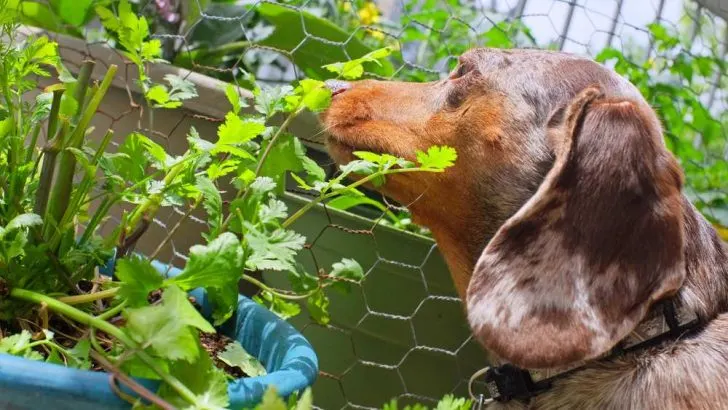You are in your kitchen making some tasty guacamole. You pull out a jar of cilantro leaves to add some to your delicious lunch. The strong smell of cilantro leaves attracts the attention of your dog. Suddenly he runs up to you and starts wagging his tail. You can tell by his reaction that he wants a taste of this spicy plant.
At that moment, you may ask yourself a bunch of questions likes: Can my dog eat cilantro? How do I feed my dog cilantro? Are there any health benefits and risks?
Luckily for you, today we will answer all these questions and tell you much more about this tasty herb, so read on!
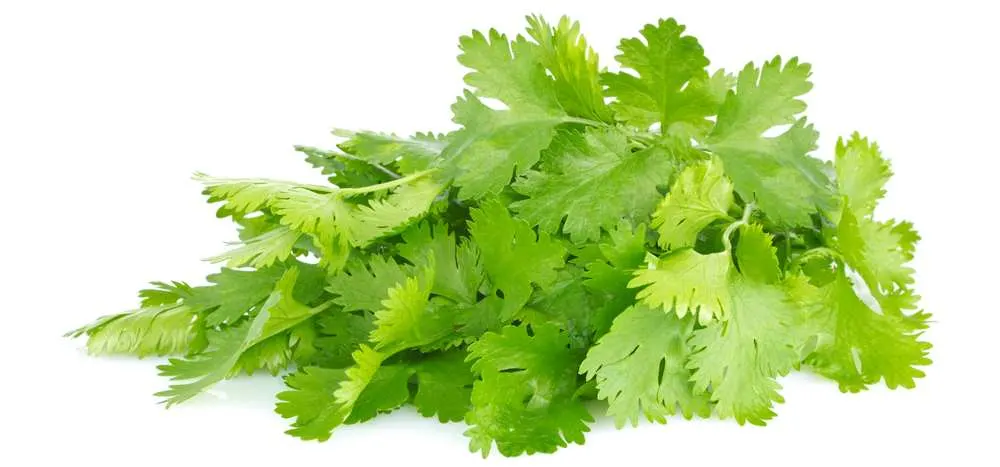
Can Dogs Eat Cilantro?
YES! Cilantro is perfectly safe for your dog to eat, and this applies to all parts of the herb – the leaves, seeds, and roots. You should be careful when it comes to the amount of cilantro you feed your pet. Too much cilantro can cause some digestion problems, but it’s not a life-threatening issue.
Feeding your pet cilantro can also have some health benefits because of the vitamins and minerals that this herb contains.
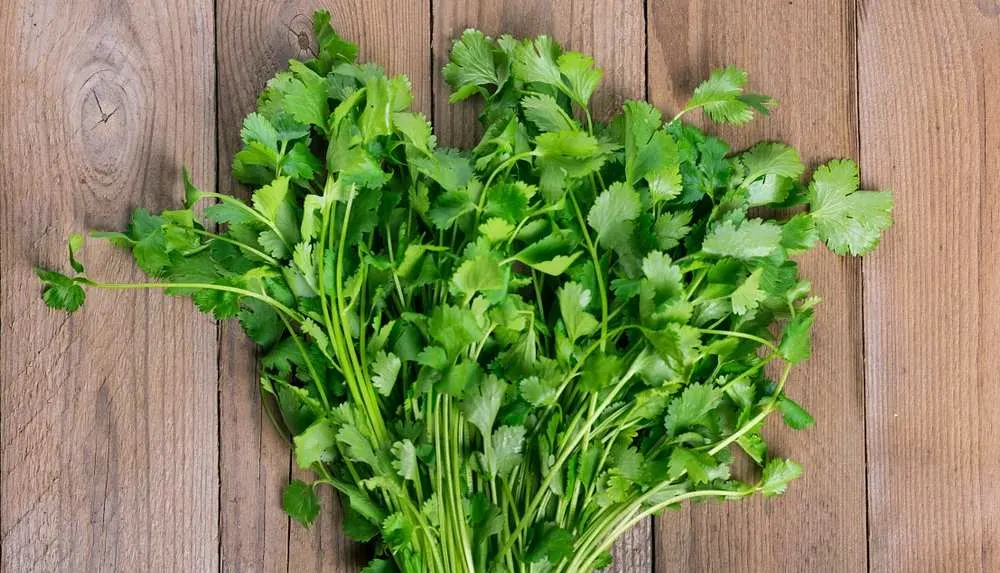
A Few Facts About Cilantro
If you have never heard of a herb called cilantro, that’s because you know it by a different name.
In Europe, cilantro is mostly called coriander. Still, there are other names for this herb, such as Chinese parsley and dhania.
Cilantro is the Spanish word for this herb, and because of its wide use in Mexican food, this name is in use in the United States.
This herb originates from Southern Europe and Western Asia. Cilantro has been cultivated for millennia for its culinary and medicinal uses.
The oldest archaeological find of cilantro dates back to a period 10.000 years ago. This herb was also found in the world-famous tomb of the Egyptian pharaoh Tutankhamen!

Culinary Uses For Cilantro
All parts of the cilantro plant can be eaten, and every piece has a different use in the kitchen.
- Leaves of this herb are most traditionally used in cuisines around the globe. They have a distinct citrusy aroma. Because heat weakens cilantro leaves’ taste, they are usually used raw to spice up guacamole and salsa. Also, fresh leaves can be used in soups and as a garnish for meat.
- Cilantro seeds are also used in a variety of ways. The seeds can be used whole or grained. Heating up the seeds strengthens their taste, and when ground, they are best used fresh because, over time, the powder loses its aroma. The seeds are used as a spice in curry, baking some types of bread, brewing beer, and making sausages.
- Cilantro roots have a more intense flavor than the leaves and seeds. They are mostly used in Asian dishes, especially soups and curries.
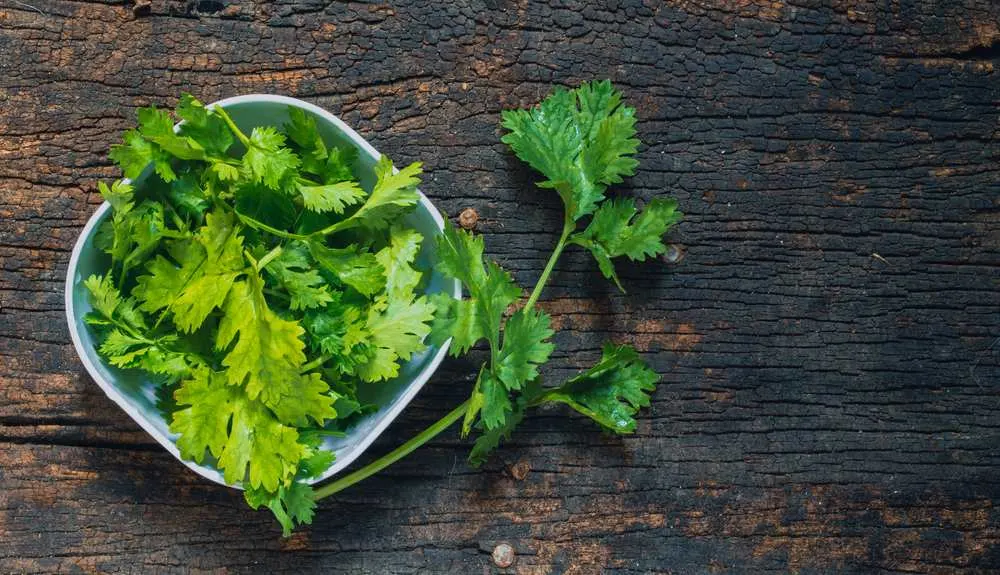
Is Cilantro Healthy For Dogs?
Since dogs are omnivores, their stomachs can get more nutrients out of plants, and cilantro is no exception. There are many health benefits of cilantro for your pet because of the healthy nutrients that this herb contains. These benefits include:
- Lowers blood sugar – Cilantro seeds activate enzymes in your pet’s body, which can reduce its blood sugar and increase insulin production.
- Rich in antioxidants – Cilantro is packed full of these helpful molecules. They help your dog’s immune system fight off infections and also reduce the risk of getting cancer. So feeding your pet cilantro is great for his overall health.
- Beneficial for gut health – Small amounts of cilantro can be good for your pooches tummy. Digesting the herb releases oils, which improve your dog’s digestion and decrease bloating. Also, cilantro can increase the appetite of your four-legged friend.
- Great for the heart – Feeding your pet cilantro can decrease its cravings for salty foods. This is beneficial for your dog’s heart health as salt increases blood pressure. Also, cilantro can help your dog get rid of excess water and salt from the body because this herb acts as a diuretic.
- Kills harmful bacteria – Cilantro has antimicrobial properties, which means that it eliminates harmful bacteria in your dog’s stomach. Feeding your pet cilantro will decrease the chance of developing bacterial infections.
- Removes bad breath and keeps gums healthy – The antimicrobial effect is very useful for your dog’s mouth. Cilantro juices will kill bacteria in your dog’s mouth. This will prevent bad breath and bacteria growth on your pet’s gums.
- Packed with vitamins – These nutrients have various health benefits for your pet. It has Vitamin A, which will improve your dog’s eyesight. It has a lot of vitamin K important for blood clotting and vitamin C, enhancing your pet’s immune system.
- Rich in minerals – This tasty herb is a good source of calcium, which is crucial for your pup’s dental health and bone strength. It also provides your pet with iron, which is important for creating red blood cells, and magnesium, which is needed for brain health.
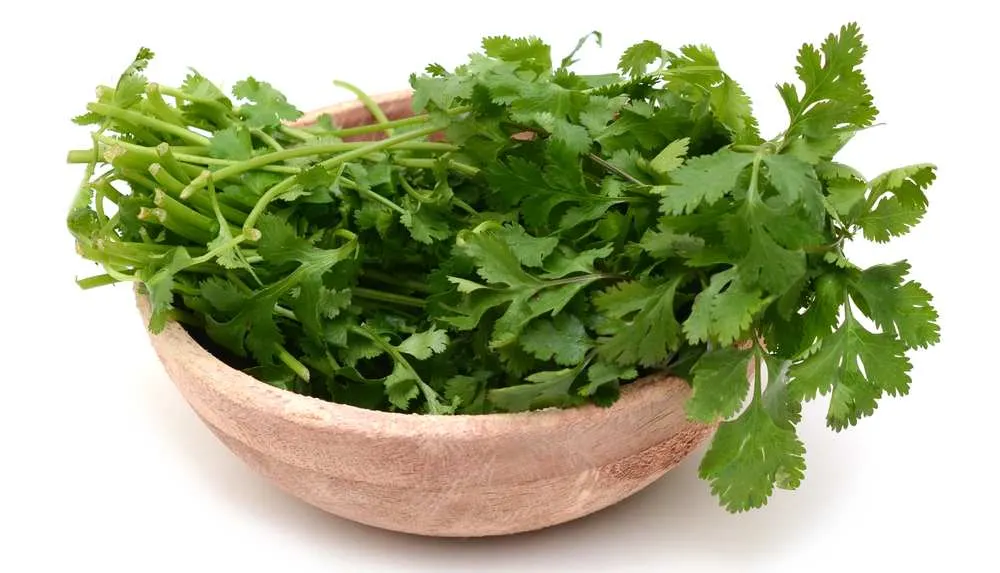
Health Risks Of Feeding Cilantro To Your Dog
While cilantro is generally safe and even healthy for your pet, in some cases, it can cause problems when you feed it to him.
Your four-legged friend can be allergic to the plant, so you need to be careful when feeding your dog with this herb and never give him too much of the stuff.
The allergic reaction can manifest as a skin rash or upsetting your dog’s stomach and causing nausea or diarrhea. In extreme cases, your dog can get a swollen face or body.
If you notice any swelling, take your pup to the vet immediately. If left untreated, it can lead to other problems.
Too much cilantro can be hard on your pet’s tummy. If he eats too much of the herb, his stomach can’t digest the high amount of fibers, causing mild problems such as bloating, diarrhea, or nausea.
Also, suppose you put too much cilantro in your pet’s regular food. In that case, he might be confused about why his favorite meal has a different taste. This can lead to your dog refusing to eat his normal meals, which you should avoid.
When introducing new foods to your dog’s diet, always start with small amounts until your pup can get used to it.
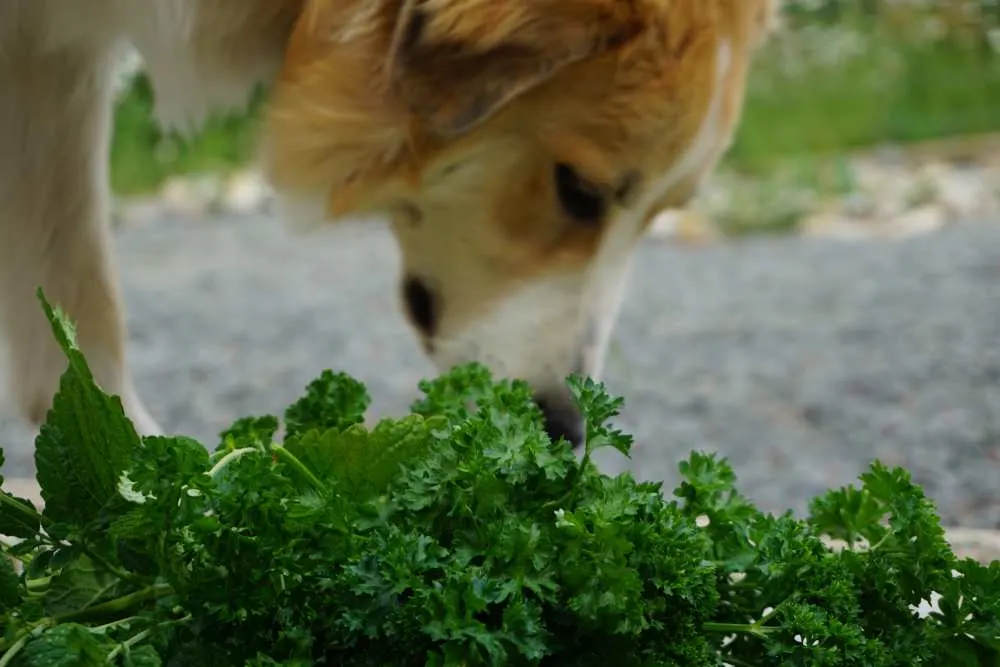
How To Feed Your Dog Cilantro?
If you decide you want to add cilantro to your dog’s diet, you should always use only fresh leaves. You can also use ground seeds and cilantro roots.
Don’t use other human foods that contain cilantro as an ingredient such as guacamole and salsa. These foods have other ingredients like onions and preservatives, which are toxic to your dog.
Because cilantro has a very distinct taste, your pup will either love it or not want to come near the thing ever again.
If it turns out that your dog doesn’t enjoy the taste of this herb, he can start refusing to eat the food he normally eats because you added cilantro to it once.
This is why it’s important to include only small amounts in the beginning, until you see if your pup likes the new flavor or not. Later you can add more when you see he’s getting used to it. There are many ways you can introduce cilantro to your pet’s diet. You can cut the leaves or roots to a small size and sprinkle them on your dog’s everyday food. You can also use the leaves to season meat or fish, just be sure that you don’t use any other dangerous spices for adding flavors to the meal.
You can also use cilantro powder, which is made from ground seeds. He may not like the texture of the leaves and roots, so cilantro powder is a better option. If it becomes clear to you that your dog dislikes the herb’s taste, stop putting it in his normal food. There is a chance he will stop eating his meals altogether, and you don’t want that to happen!

Conclusion
All in all, cilantro is a safe and healthy snack for your pup if you don’t go overboard with the amount you give him. You can mix it with your pet’s food, as long as he enjoys the taste. If he doesn’t, you shouldn’t put it into his food anymore.
Your dog will have many health benefits if he eats cilantro; it’s great for his general health, bone strength, and bad breath. You just have to keep an eye out for allergic reactions when you first start feeding it to him.
If your canine friend likes the taste and doesn’t have allergies to cilantro, feel free to let him enjoy this tasty herb!
Learn More: What Can Dogs Eat? A Comprehensive List Of Dog-safe Foods

